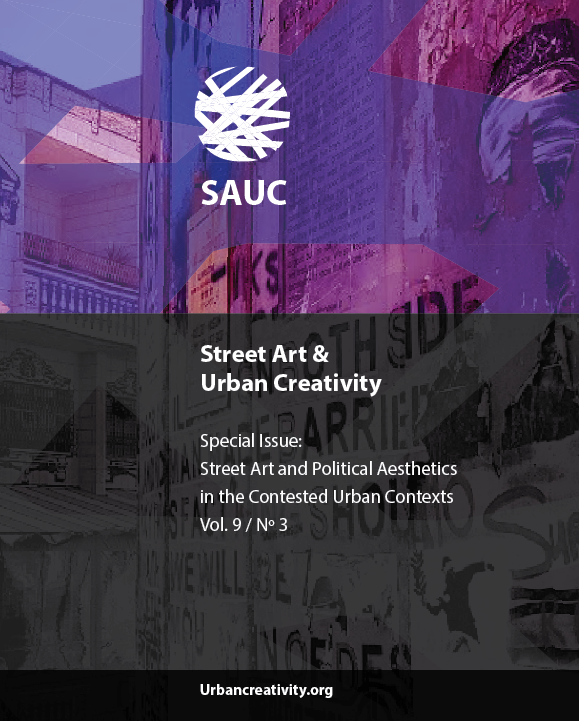Activism, Textuality, and Feedback in La nueva banda de la terraza’s Graffiti- Projections
DOI:
https://doi.org/10.25765/sauc.v9i3.803Keywords:
Social mobilization, graffiti, street art, estallido social, expanded cinema, para-cinemaAbstract
In the social mobilizations (2020-2022) during and after the COVID-19 lockdown in Colombia, the graffiti- projections produced, projected, and published by La nueva banda de la terraza played an essential role in visualizing, nurturing, and accompanying the social protests and the demands. As part of an unparalleled visual activism in Colombia, the graffiti-projections, which began in Medellín and soon expanded to other cities and beyond the country’s borders, created an expanded para-cinema of protests, played an essential role in a complex web of actions and practices that made it possible, for the first time in the republican history of Colombia, to create a comprehensive, multivocal, and diverse social movement. The present analysis discusses how the graffiti- projections catalyzed engagement and dialogue and strengthened the democratization of the public sphere by developing an expanded para-cinema that involved textuality and social media, reenergized graffiti, street art, and communal Do-It-With-Others, and developed emancipatory strategies and networks.
Downloads
Global Statistics ℹ️
|
170
Views
|
36
Downloads
|
|
206
Total
|
|
Downloads
Published
How to Cite
Issue
Section
License
Those authors who publish in this journal accept the following terms:
-
Authors retain copyright.
-
Authors transfer to the journal the right of first publication. The journal also owns the publishing rights.
-
All published contents are governed by an Attribution-NoDerivatives 4.0 International License.
Access the informative version and legal text of the license. By virtue of this, third parties are allowed to use what is published as long as they mention the authorship of the work and the first publication in this journal. If you transform the material, you may not distribute the modified work. -
Authors may make other independent and additional contractual arrangements for non-exclusive distribution of the version of the article published in this journal (e.g., inclusion in an institutional repository or publication in a book) as long as they clearly indicate that the work was first published in this journal.
- Authors are allowed and recommended to publish their work on the Internet (for example on institutional and personal websites), following the publication of, and referencing the journal, as this could lead to constructive exchanges and a more extensive and quick circulation of published works (see The Effect of Open Access).













